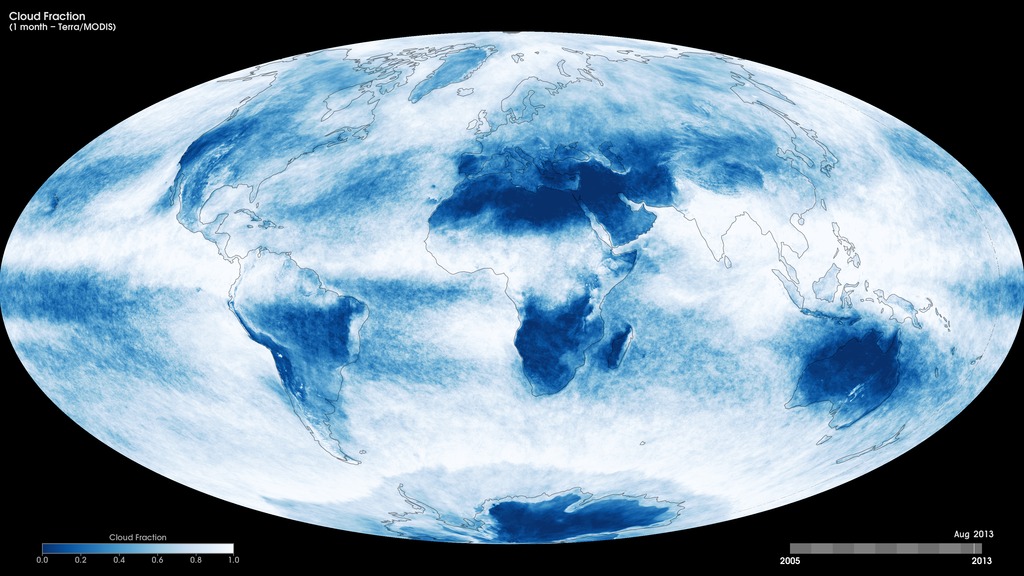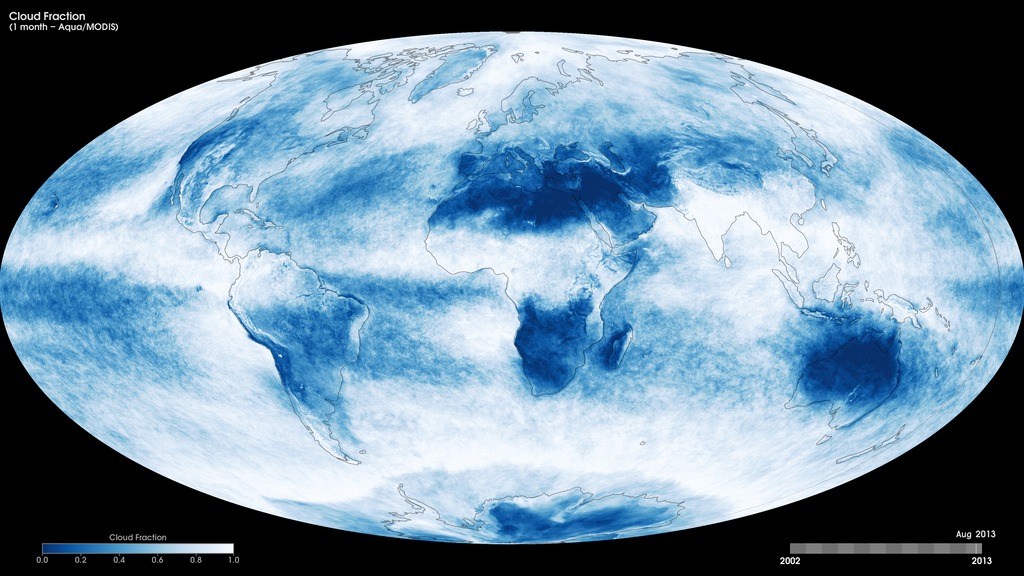2015 Monthly Cloud Fraction
Monthly Cloud Fraction for 2015 (Aqua/MODIS)
MODIS aboard Aqua with its wide coverage can tell us how cloudy different parts of the world are. This animation shows how the amount of cloud varies within a year throughout the globe.
Credits
Please give credit for this item to:
NASA's Goddard Space Flight Center
-
Animator
- Amy Moran (Global Science and Technology, Inc.)
Release date
This page was originally published on Thursday, December 8, 2016.
This page was last updated on Sunday, February 2, 2025 at 12:36 AM EST.
Missions
This page is related to the following missions:Datasets used
-
[Aqua: MODIS]
ID: 5
Note: While we identify the data sets used on this page, we do not store any further details, nor the data sets themselves on our site.

